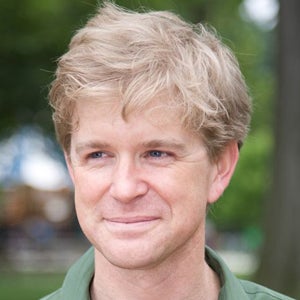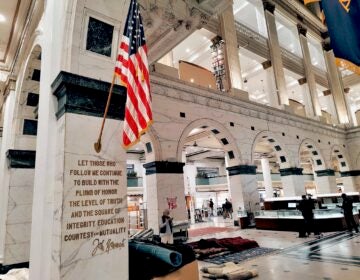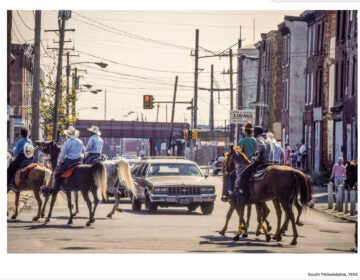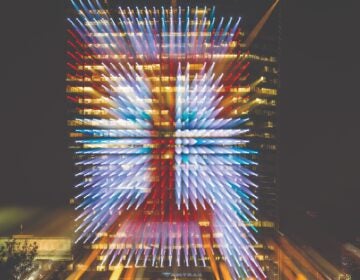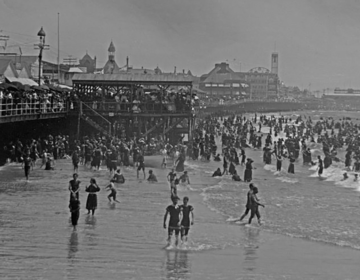Hidden City is producing a book of historic Philly photos. It wants to put your family snapshots in it
“Philadelphia in Color: 1950 - 1990,” coming in 2026, will feature candid snapshots submitted by the public.
From Philly and the Pa. suburbs to South Jersey and Delaware, what would you like WHYY News to cover? Let us know!
A new book of historic Philadelphia photos is planned for 2026, and it wants your input.
Hidden City, the longtime blog exploring the crannies of Philly’s urban environment, is asking the public to pull out the old scrapbooks and slide carousels to look for color photographs taken in the city between 1950 and 1990.
Submissions will be considered for a published book called “Philadelphia In Color,” expected to be released in 2026. Project director Pete Woodall, who has been combing through institutional photo archives, wants to add personal photos into the mix.
“We see this book as a work of history as well as a community portrait,” he said. “Politicians, stock footage, or very newsy photos: not interested. There’s a charm and informality that people’s individual photos have. This is a book about Philadelphia.”
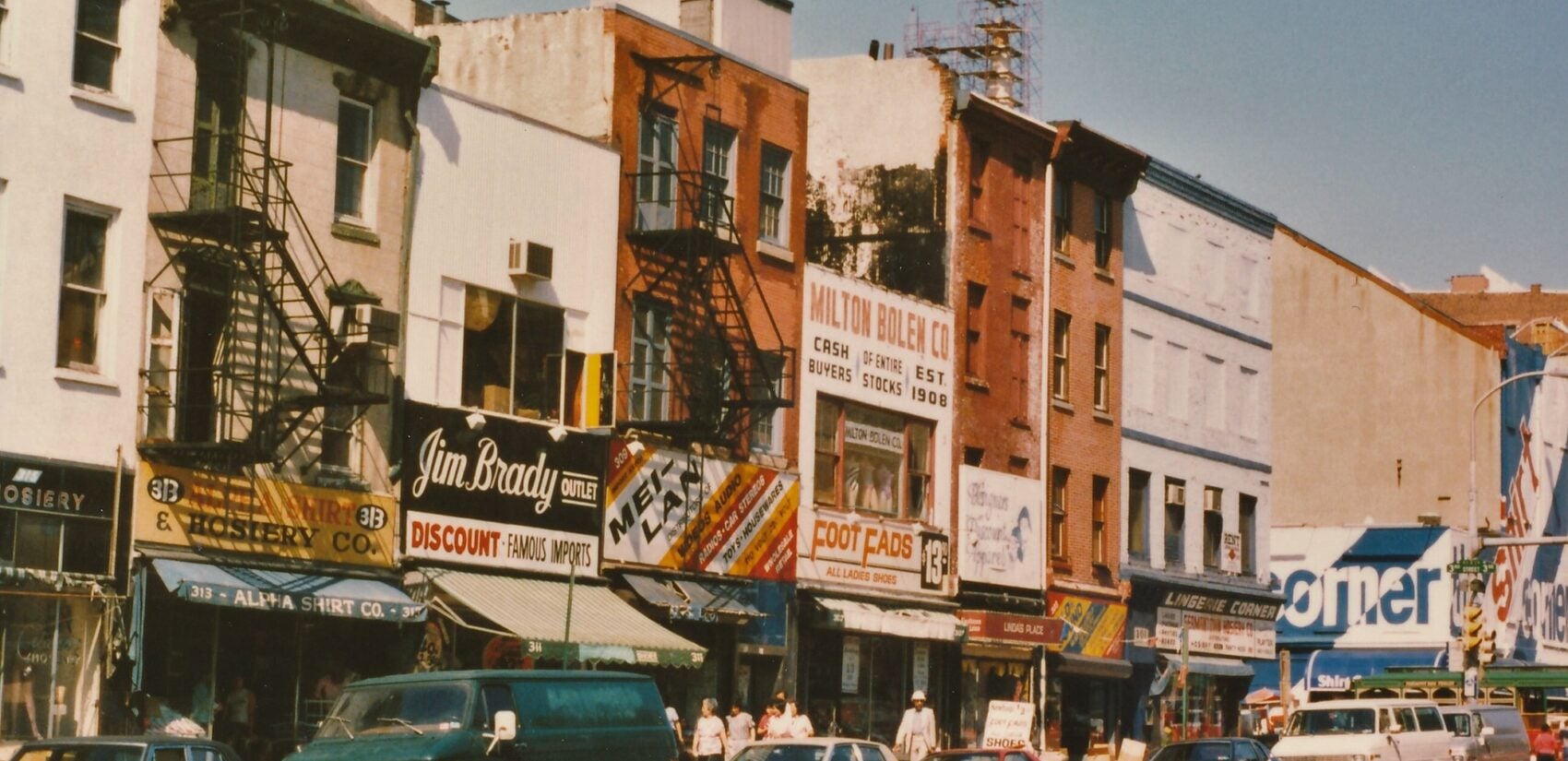
The criteria: the images must be in color, they must be within the 1950 to 1990 time frame, and they must be exteriors showing some aspect of the city’s built environment.
Woodall said about 50 people have already submitted photos.
One of them is Lynn Collins who sent in a family wedding photo from the summer of 1975. Collins, who is 8 years old in the picture, is part of her aunt and uncle’s large wedding party at St. Peter Claver Church at 12th and Lombard streets.
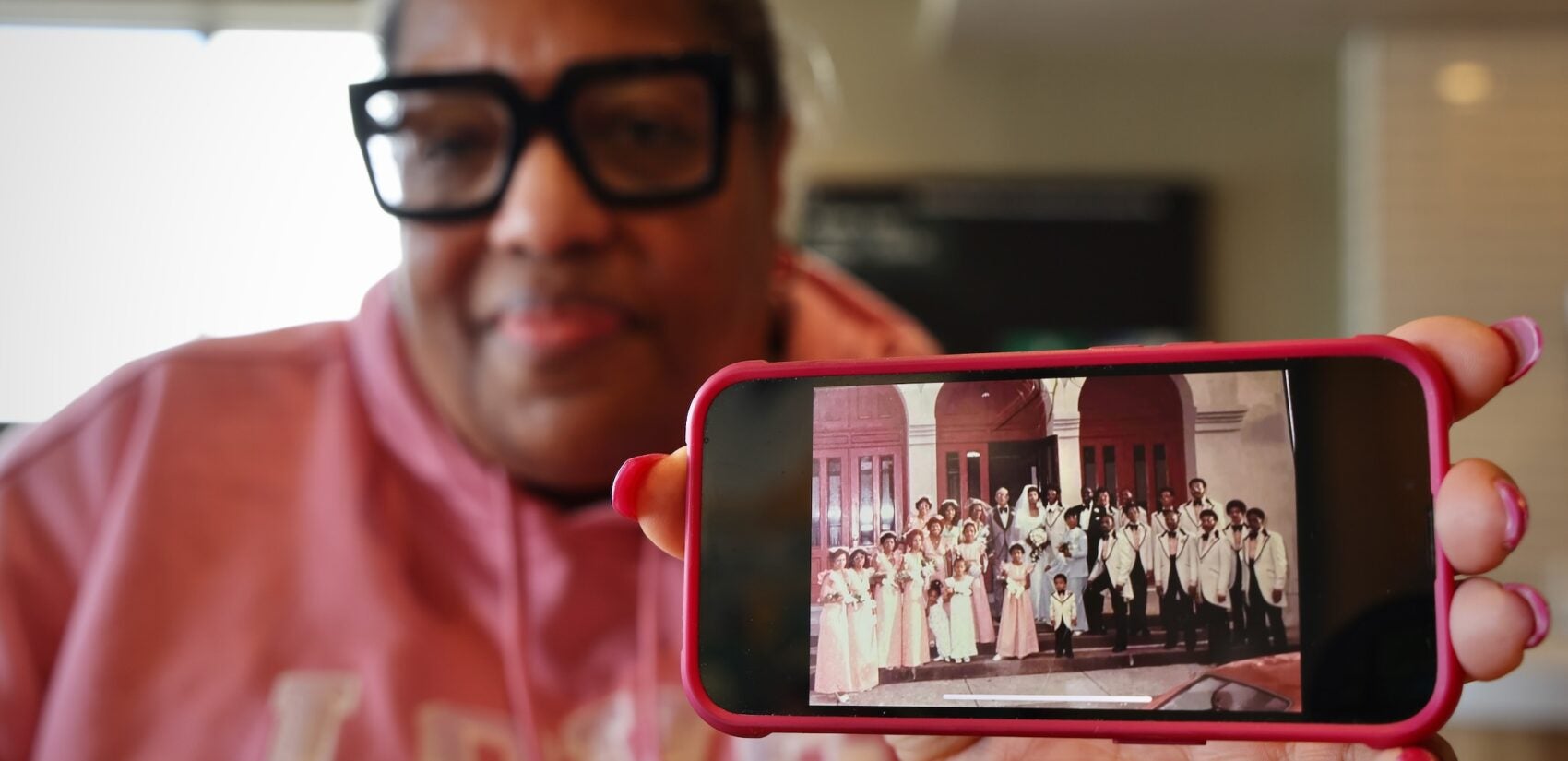
The picture is notable for its 1970s styles, including the extra-long groomsmen’s white jackets with wide lapels piped with black edging. But to Collins, it is a trip down memory lane.
“When we left my grandparents’ house, my aunt’s friend’s daughter who was a flower girl, her dress got caught in a fan,” Collins recalled. “Everybody’s freaking out, but it was fine.”
“I remember at the reception my dad and my uncle got in a big fight,” she said. “We still talk about this stuff.”
Her aunt and uncle will celebrate their 50th wedding anniversary this summer in New Orleans, where they now live. The wedding photo is one of their few family pictures to survive the flooding of Hurricane Katrina in 2005.
To Hidden City, the wedding photo is a crucial peek into a part of Philadelphia that no longer exists.
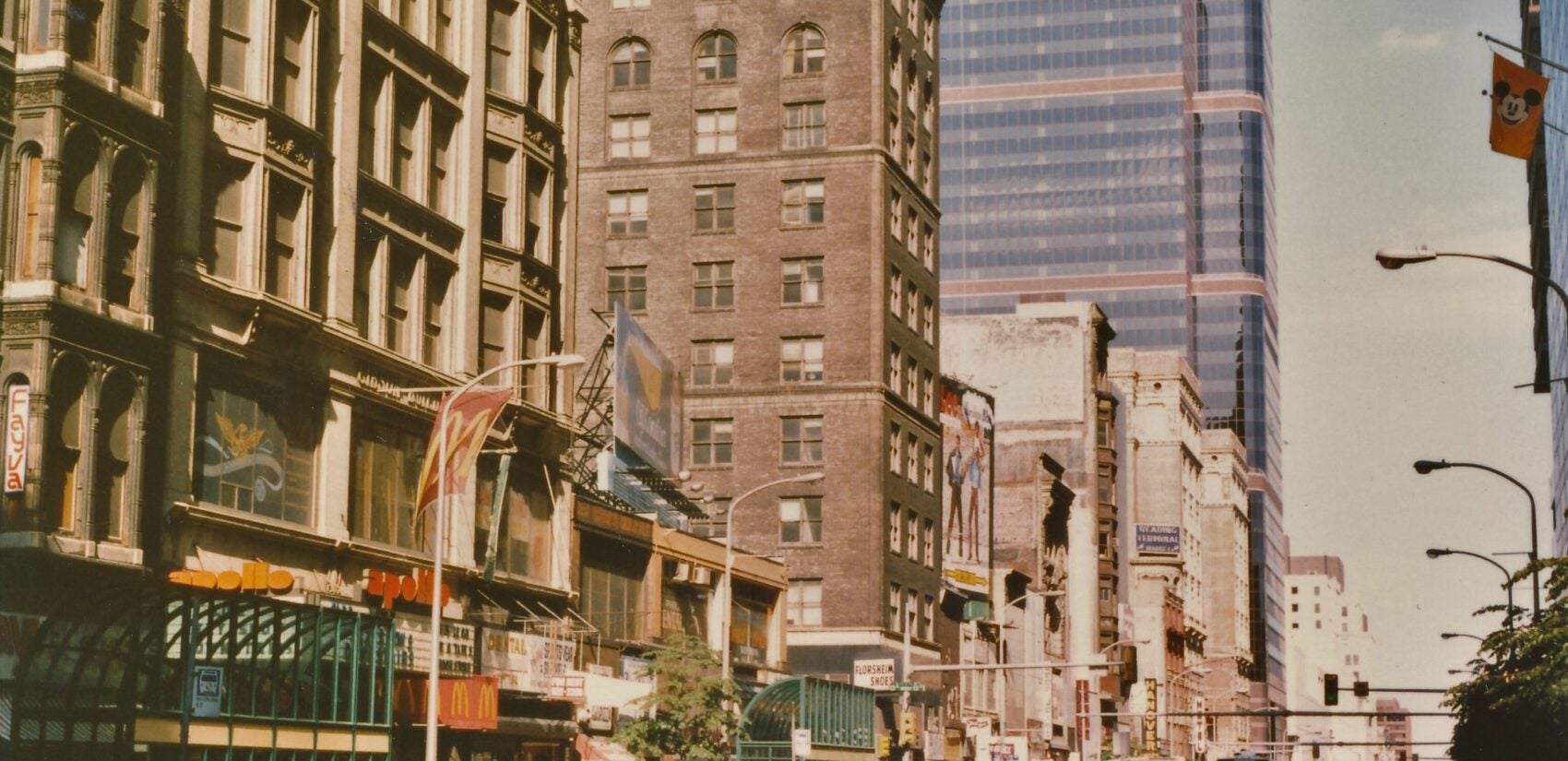
St. Peter Claver was the first church in the city established expressly for Black Catholics. Opened in 1892, St. Peter Claver served as a center for Black religious and cultural life for over a century. Collins’ grandparents, William and Etna Collins, were deeply involved in it.
The Archdiocese began winding down St. Peter Claver in the 1980s, converting it into an evangelizing center before formally closing it last year. The former church is now being prepared for sale.
Popular histories of Philadelphia told in pictures is an uncommon thing, Woodall said, particularly next to New York City, which seemingly everyone wants to photograph at any time.
“If we compare it to New York — obviously New York is a different place — but it’s not 10-to-1. It’s more like 100-to-1,” Woodall said. “There are huge chunks of documentation of Philadelphia that are missing because the market was not as fertile here.”
Woodall chose 1950 to 1990 because color photography was uncommon before the former and widely common after the later. In between he hopes to find rich visual material.
It was also an era of widespread urban decline.
“They were the sh*****st decades for American cities,” Nathaniel Popkin, co-founder of Hidden City, told the audience last week during the launch of a fundraising campaign for the publication.
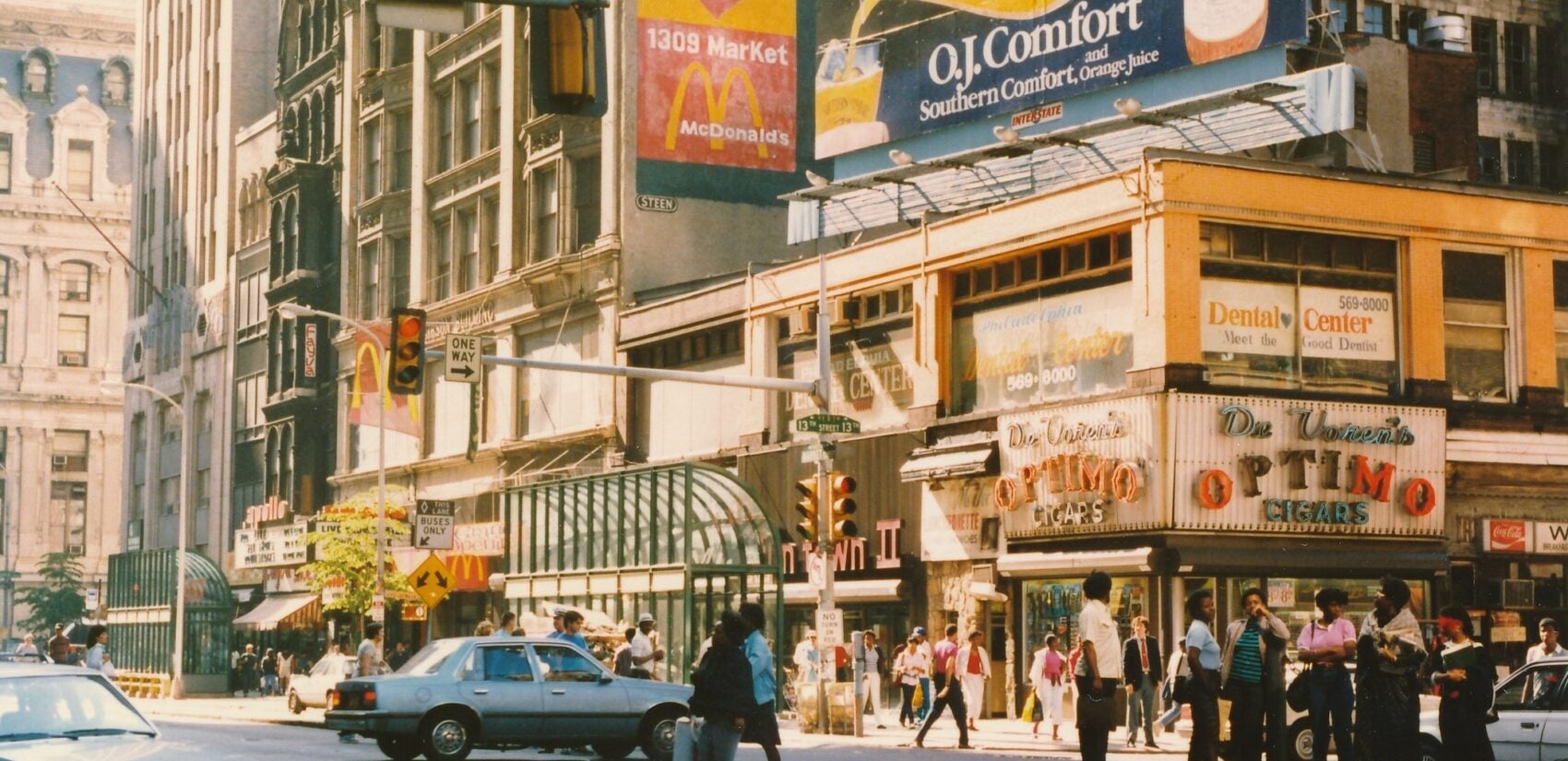
Popkin said “Philadelphia in Color” is meant to show that urban decline is not the only thing to consider during those decades, “and certainly not the most important thing.”
Daria DiPasquale was born in 1957 in South Philadelphia just as the city — at least according to urban historians — was beginning its decline.
But she didn’t know that.
“I had an aunt across the street. I had an aunt down the block. I had a best friend five doors away. Grandpop was on 7th and Mifflin. We were 11th and Shunk,” DiPasquale recalled. “You didn’t need a car. You didn’t need to knock or ring the bell.”
“I’m dating myself,” she said. “But with pleasure.”
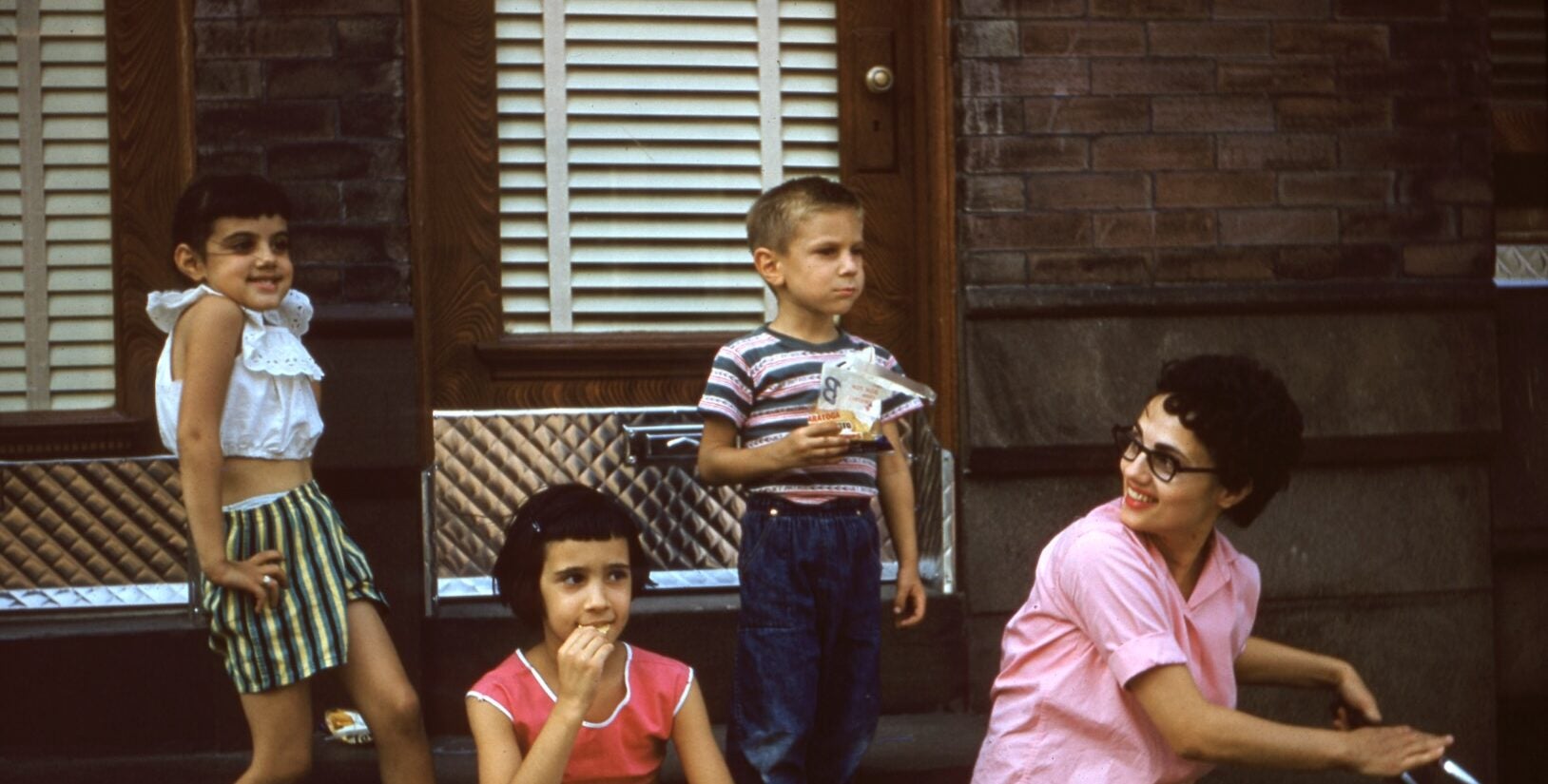
DiPasquale submitted to Hidden City a box full of hundreds of color slides taken by her father, an amateur but skilled shutterbug, showing the street life she grew up in.
“I see my neighborhood, my ZIP Code 19148. I see my family. I see our lives. It’s such a connection,” she said. “It’s a heart connection, really. Not to sound like a Hallmark card, but it’s what it really feels like, the clothes, the absence of cars, just the past, to see the past.”
DiPasquale’s father was not attempting to document Philadelphia, rather his own growing family. It just so happens that in doing so he captured moments of people living their lives on streets, sidewalks, stoops and rooftops.
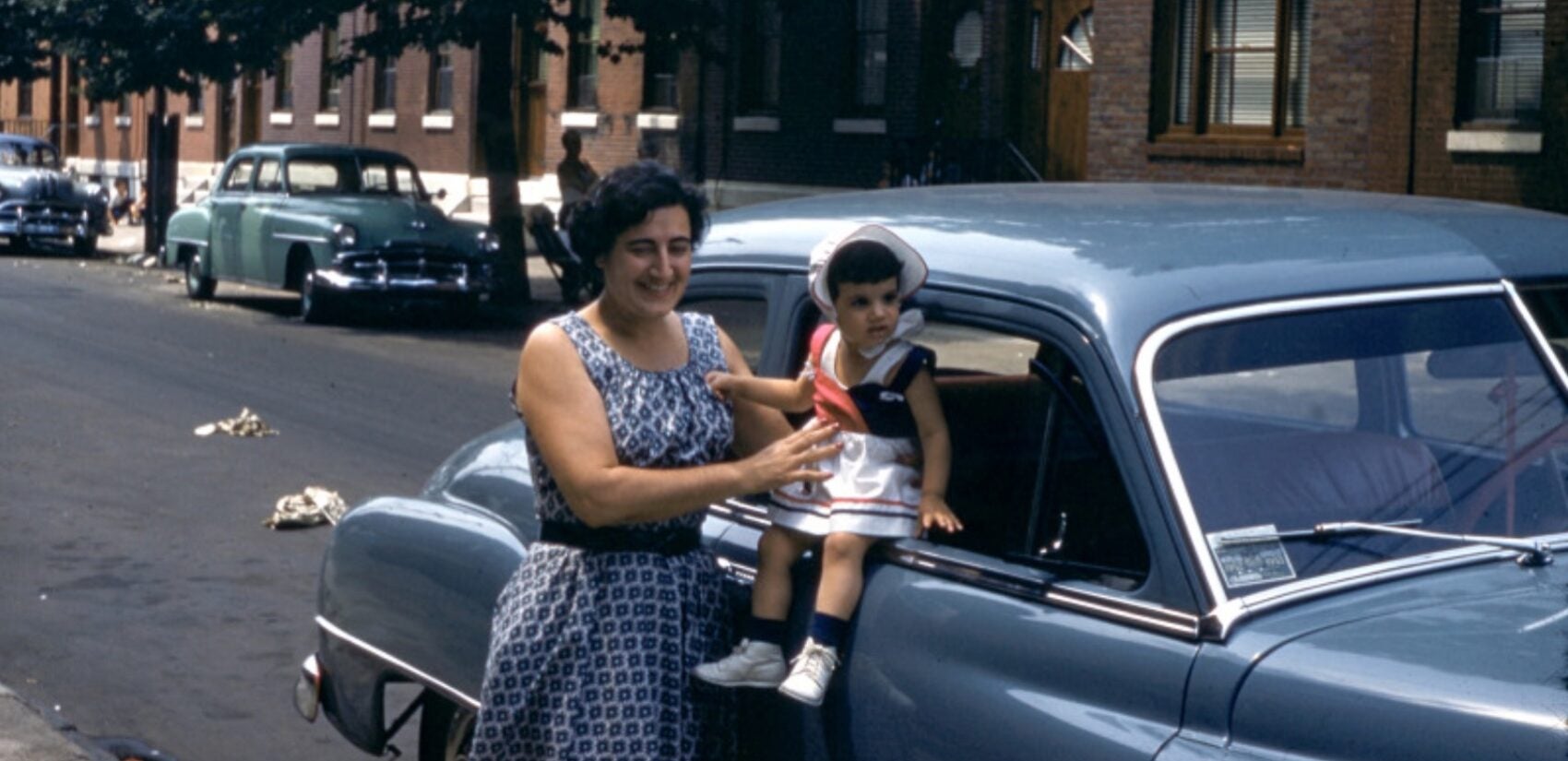
Woodall said there is a remarkable number of submitted photos of crowded rowhome stoops, and kids posed on parked cars.
“You realize that life was much more public,” he said. “There were more parades, possibly even more demonstrations, more hanging out. A lot of hanging out. Hanging out on the stoop is a common theme we’re seeing.”
Hidden City has launched a $30,000 Kickstarter fundraising campaign to raise money for the publication of “Philadelphia in Color,” and created an online portal for accepting photo submissions, and it has scanning equipment for digitizing printed photos. The window for submitted photos to the book project closes at the end of April.

Saturdays just got more interesting.
WHYY is your source for fact-based, in-depth journalism and information. As a nonprofit organization, we rely on financial support from readers like you. Please give today.


